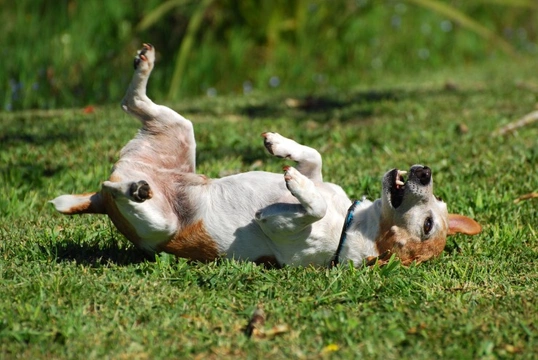
Pruritus in dogs
Many dogs, no matter what breed they happen to be, suffer from some sort of skin allergy which makes life incredibly uncomfortable for them. It can also be a worrying time for owners as they try to find out what is triggering these constant flare ups. It can take time and lots of effort when it comes to finding out why a dog suddenly develops a problem which they just can’t leave alone. Pruritus in dogs is not only worrying, but it is also sees dogs scratching, itching, chewing and licking at specific areas of their bodies which as a result just makes matters that much worse and could even lead to a more serious infection.
Pruritus explained
The term pruritus"" is used to explain why a dog has a sudden urge and sensation to rub, chew, lick and scratch at specific areas of their bodies whether it's their hair or skin. It also describes inflamed skin which develops thanks to a dog’s constant need to scratch and chew which they do so intensely that it eventually leads to total hair loss.
Symptoms to watch out for
The most common signs of a dog developing pruritus are quite obvious and typically includes the following behaviours:
- Constant licking
- Scratching
- Chewing
- Biting
- Self-mutilation and trauma
- Inflamed skin
- Alopecia - partial and/or total hair loss
Causes of pruritus
Dogs can develop pruritus for many reasons some of which are obvious whereas others are not and as such need further veterinary investigation which would require all sorts of tests being carried out to eliminate any underlying causes. The most common causes of why a dog develops pruritus are as follows:
- Allergies
- Bacterial infections
- Fungal infections
- Fleas
- Lice
- Scabies
- Abnormal cell growth/development - known as neoplasia
- Immune disorders
Diagnosing the condition in dogs
A vet would want to have a dog's full medical history and be told how the onset of any symptoms first manifested themselves and how long a dog has been itching and scratching at themselves. The sort of test they would want to carry out could include the following:
- A skin biopsy - this would establish what is triggering the cause of a skin irritation and therefore a dog's desire to scratch and chew
- Allergy testing - this would establish the cause of a flare up
Treatment options
A vet would decide on what sort of treatment a dog should undergo depending on the underlying condition that is causing a dog to self-mutilate, lick and chew at affected areas of their bodies. They might recommend changing a dog's diet to eliminate any ingredients that may be triggering a flare up. To make a dog more comfortable, a vet would prescribe medication which could be taken orally or by injection while at the same time recommending that affected areas of their bodies are treated with a prescribed topical medicated ointment with an end goal being to ease their need to scratch and chew**.**
Living with a dog suffering from pruritus
When dogs suffer from pruritus, they would need to receive ongoing veterinary treatment. It can take time to discover just what is triggering a problem which can be extremely frustrating for both an affected dog and their owner. Sadly, there is no way of preventing a dog from developing a skin problem and therefore suffering from pruritus, but their condition can be managed and over time could even be resolved. As such, the prognosis for any dog that develops pruritus tends to be positive.
""



